This brightly flavored orange jelly makes for happy toast! But don’t stop there. Keeping some jars of this lower-sugar jelly in the cupboard means you can use it as a glaze when grilling meats, too.
If you’re new to canning homemade jelly, this step-by-step guide to making fruit spreads will help get you started.
Ingredients
Orange juice — If you have access to lots of fresh fruit, as I do, freshly squeezed orange juice is a great option. That said, this is a recipe that allows for a bit of a shortcut: frozen orange juice concentrate. Mix the concentrate with the required amount of water before measuring the juice for jelly.
Sugar — Use your favorite brand of granulated cane sugar. I prefer organic.
Lemon juice – Use bottled lemon juice to assure that the resulting pH for this recipe falls within safe canning guidelines.
Pectin – This recipe is made using Pomona’s Universal Pectin. This is the only pectin I use anymore as it allows me to use much less sweetener. The standard pectin brands use an obscene amount of sugar in my opinion, often requiring equal amounts of sugar and fruit! This product uses a low methoxyl method and calls for using two different ingredients, which are included in the box: pectin (the large packet) and calcium powder (the small packet). The dry pectin is mixed with the sweetener before being added to the fruit. The calcium water is added directly to the fruit. This low sugar powdered pectin works a little differently, but makes a delicious, fruit-forward jam.
5 Easy Steps to Transform Your Pantry!
Ready to switch from store bought to homemade? Let me help you make some changes! Grab my FREE five-part guide to getting started.
Making the Jelly
Start by juicing the oranges. Strain out the pulp and measure 8 cups into a large stock pot along with the lemon juice and calcium water. Bring to a boil over medium high heat.
While orange juice is heating, combine the pectin with the honey. Once the orange juice is boiling, add the honey to the pot and stir vigorously to incorporate the pectin. Return to a boil and proceed with canning.
The Handcrafted Pantry

Ready to DIY your pantry with more wholesome ingredients? Check out my ebook, The Handcrafted Pantry! Filled with delicious recipes for some of your favorite condiments, snacks, and toppings, it’s the guide you need to start skipping packaged products and embrace homemade.
Canning Jelly
You’ll need special canning jars, lids, and rings (read more about canning equipment here) to make this orange jelly recipe shelf-stable, but the process isn’t difficult.
Use quarter-pint or half pint jars for this recipe.
Fill the jars with the hot orange jelly mixture to within a 1/4″ headspace. Set the flat lid in place and screw on the band.
🍅 Safety First!
Canning is an excellent way to preserve food for the pantry, but there are some important safety considerations to keep in mind. The recipes on this site have been made following safe canning procedures by a certified Master Food Preserver.
- Know the difference between water bath canning and pressure canning. Low acid items must be pressure canned for safety.
- Altering ingredients may change the recipe’s pH, posing a safety issue. I highly recommend investing in pH paper to test your products for acidity level when canning. Note: For safe water bath canning, the Hawaii Master Food Preservers suggest a pH of 4.2 or lower in the tropics. In other regions, the recommended pH is 4.6 or lower.
- Use the proper jars and lids. Never reuse lids, with the exception of the Tattler or Harvest Right hard plastic lids that are intended for such a purpose.
- For more on canning equipment, please go here.
- Want to learn more? The National Center for Home Food Preservation is the go-to resource for safe canning information.
Once the jars are filled, you’ll process them in a boiling water canner. What this means is you’ll put the filled and sealed jars of jelly into boiling water and heat them for ten minutes. This assures that the jars will seal well.
You might be able to use a large pot, rather than a special water bath canner.
Place hot jars on a countertop lined with a kitchen towel and allow to cool fully. As they cool, you’ll hear the little “tink” sound of the jars sealing. Store any unsealed jars in the fridge and use those first. (This is unusual, but it does happen once in awhile.)
Remove the ring from each sealed jar, rinse to remove any jam residue, and store (without the ring) in a cool, dry place, such as the pantry. Processing jars in this manner allows the jelly to be safely stored at room temperature rather than being refrigerated.
★ Did you love this recipe? Be sure to give it a star rating below! ★
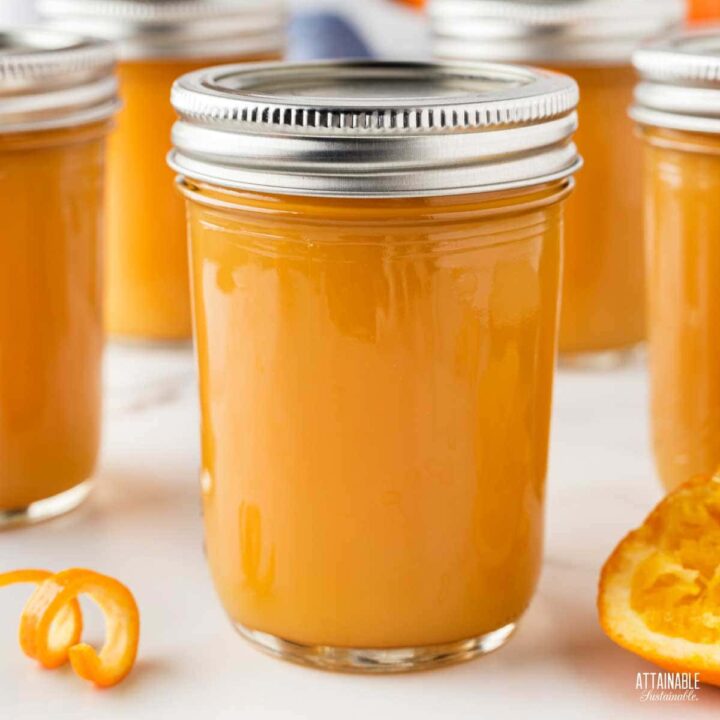
Easy Orange Jelly for Canning
This sunny and bright orange jelly is a great addition to the pantry. Serve it on toast or use it to baste grilled chicken for a pop of flavor.
Ingredients
- 8 cups orange juice (pulp strained out)
- 4 teaspoons calcium water (from Pomona's Pectin box)
- 1/2 cup lemon juice bottled
- 1 cup honey
- 8 teaspoons pectin (from Pomona's Pectin box)
Instructions
PREPARE FOR CANNING
- Prepare the calcium water: Combine ½ teaspoon calcium powder (from the small packet in the box of Pomona’s pectin) with ½ cup water in a small jar. Screw on a lit and shake until well-combined. You'll have more than you need for this recipe. Store the excess in the refrigerator for use in making additional jam or jelly recipes.
- Wash the jars you'll use, making sure each is clean and free of nicks in the rim, which could impede sealing.
- Wash the lids and rings in hot soapy water. (If you're using non-Ball brand lids, prepare as suggested by manufacturer.)
- Place empty jars in a canning pot or large stock pot with enough water to cover by an inch or two, cover pot, and set on high heat. It can take awhile for the water to heat, so get it started before you begin making the recipe.
MAKE THE ORANGE JELLY
- Measure the orange juice, lemon juice, and 4 teaspoons of prepared calcium water into a large saucepan; bring to a full rolling boil. (Save the remaining calcium water in the fridge for a future batch of jelly.)
- Meanwhile, combine the sweetener with the pectin until it's thoroughly combined.
- When the orange juice mixture comes to a boil, stir in the pectin and honey, stirring vigorously for 1 to 2 minutes to dissolve the pectin while bringing the jelly back to a boil. You can use your immersion blender to do this, if you have one. Otherwise, whisk vigorously.
- Remove from heat when the jelly boils.
CANNING THE JELLY
- Remove the empty jars from the canner, draining the water back into the pot.
- Ladle hot jelly into quarter-pint, half-pint, or pint sized jars, leaving 1/4" head space. A canning funnel makes this easy.
- Wipe jar rims to remove any jam that may have spilled. A clean rim is essential to a good seal.
- Set jar lids in place. Screw bands on finger tight.
- Use a jar lifter to gently place jars into hot water in a canning pot equipped with a rack. Water should cover the top of the jars by an inch. The water will cool somewhat in reaction to the addition of the jars. Return the water to a simmer and then set the timer.
- Process for 10 minutes 0-1,000 feet altitude; add an additional minute for every additional 1,000 feet in elevation.
- Remove jars from water using the jar lifter and transfer to a solid, towel-covered surface. Allow to cool for 24 hours.
- Check seals. Lids should be solid and pulled down tight. (if they flex and pop, the jar didn’t seal; put unsealed jars in the refrigerator and use those first).
- Remove rings and wash outsides of jars. Store in a cool, dry place.
Notes
This jelly recipe allows for a shortcut if you're not inclined to juice your own oranges: start with store-bought orange juice.
If you'd prefer to use sugar rather than honey, replace 1 cup of honey with 2 cups sugar.
You may safely use 1/4 pint, half-pint, or pint-sized jars for canning this jelly.
Boiling lids or heating above 180°F as once recommended can damage the sealing compound.
SOURCE: Adapted from Pomona's Universal Pectin.
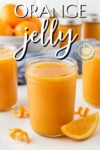
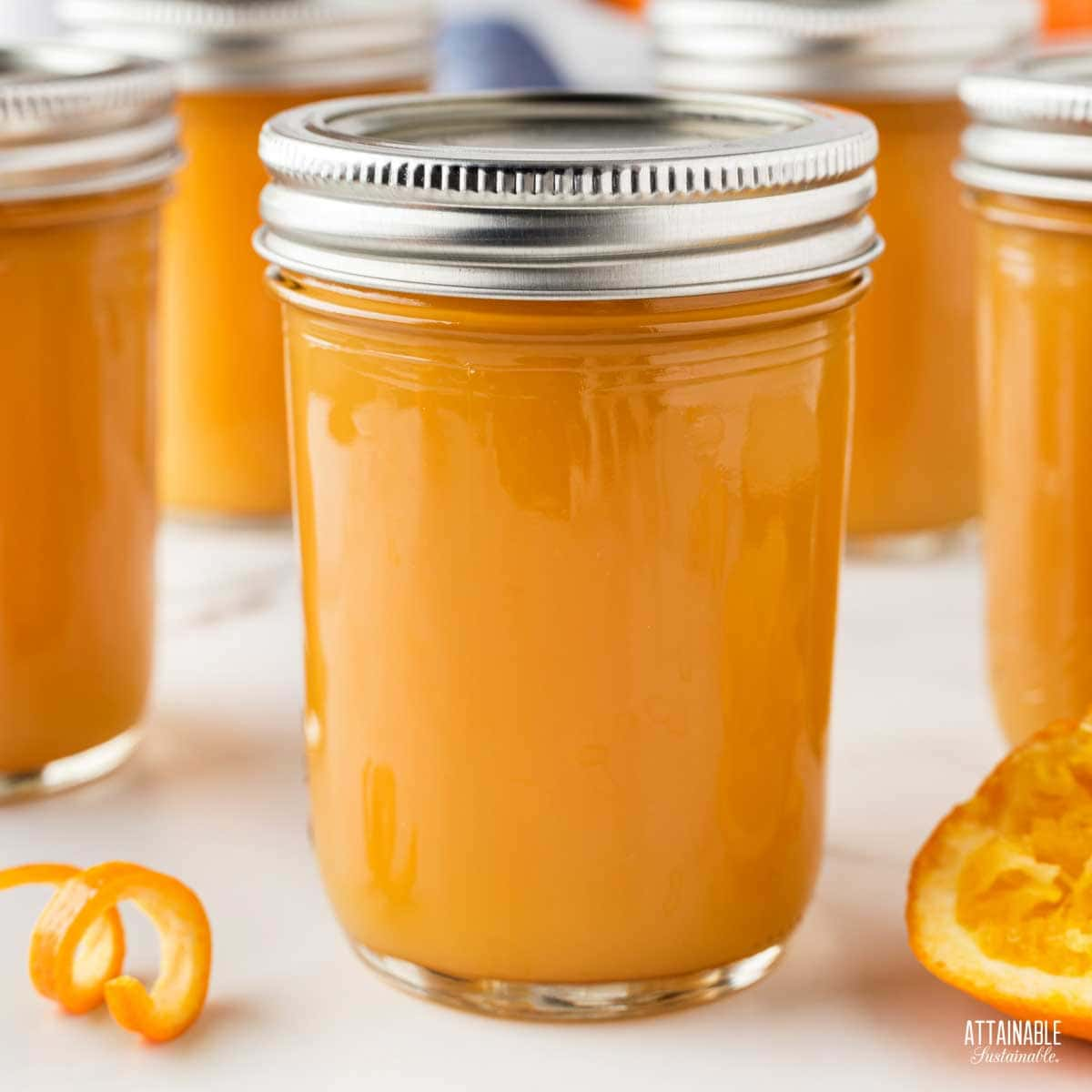
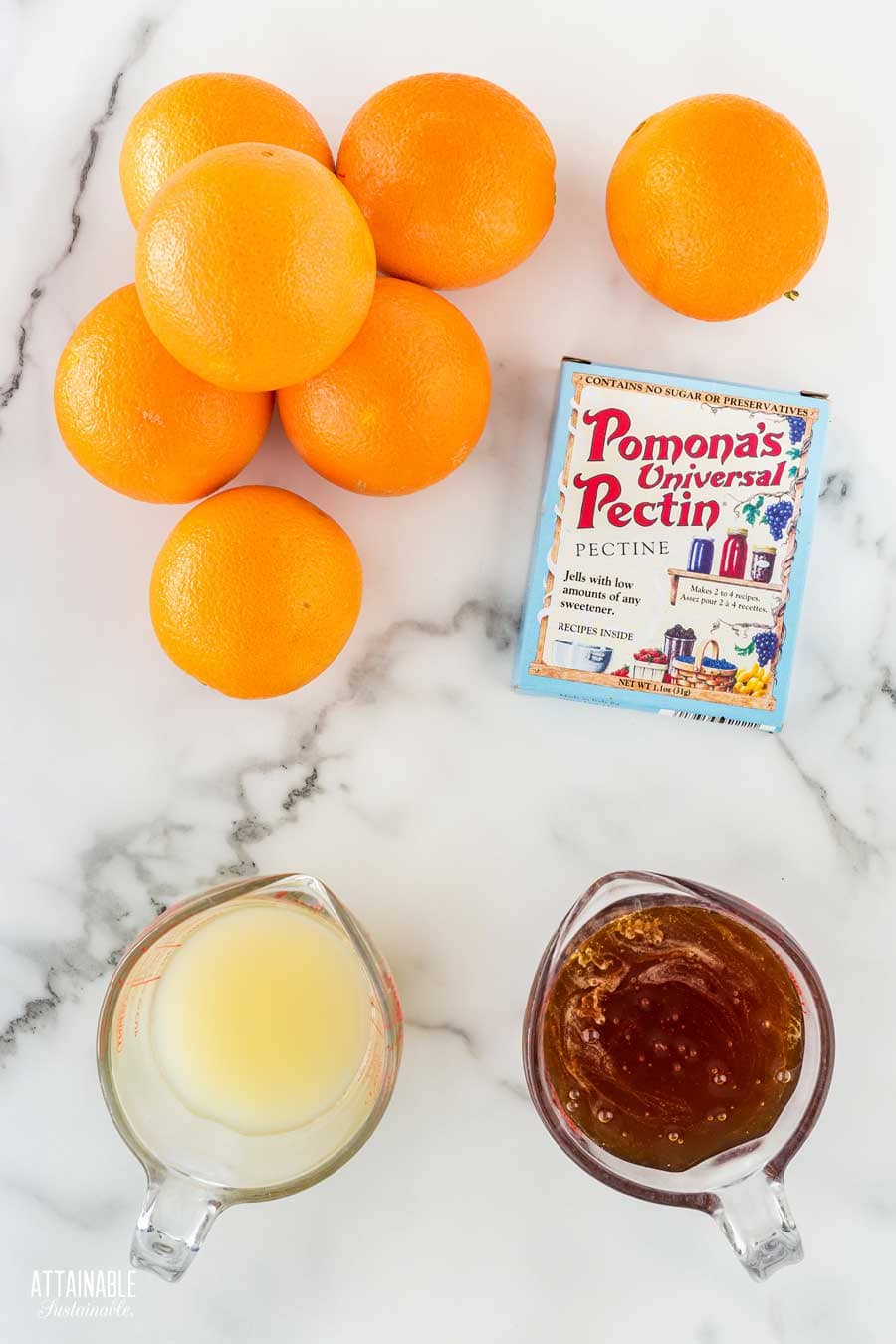




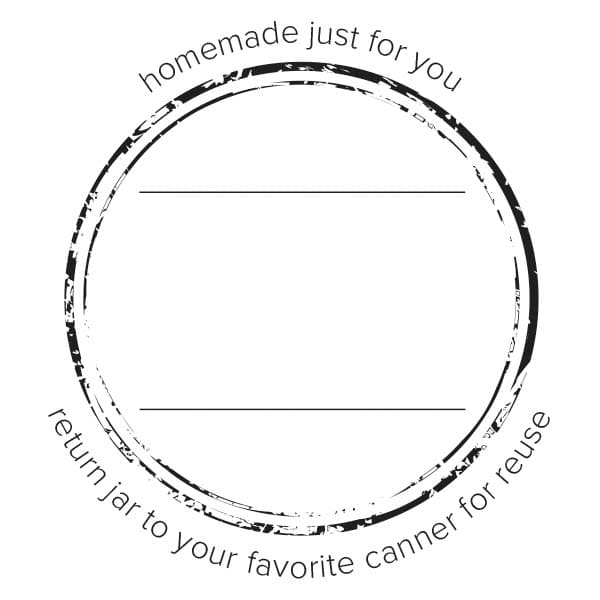






Can this recipe be adapted to use something like Sure-jel instead of Pomona’s?
I haven’t tested that with this recipe, for canning it’s important to keep the recipe as is for food safety.
Where do you get this pectin
Check the canning area of your grocery store, or health food store. Otherwise you can likely get it online!